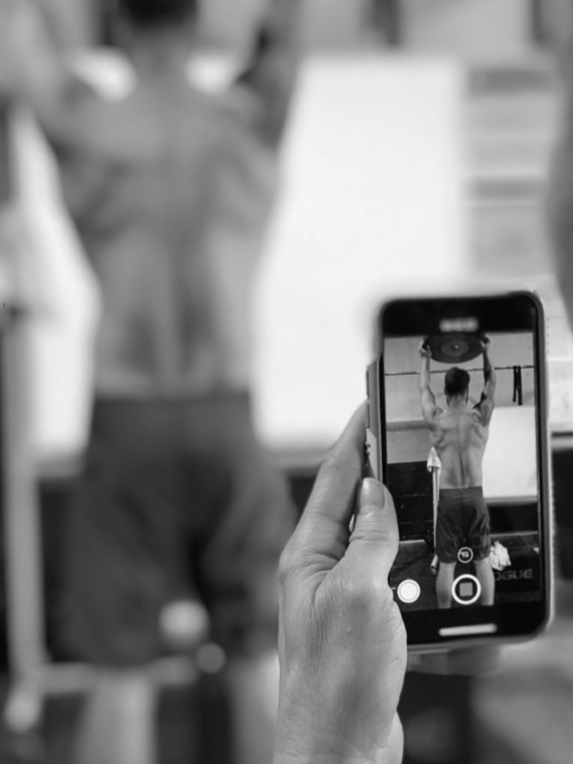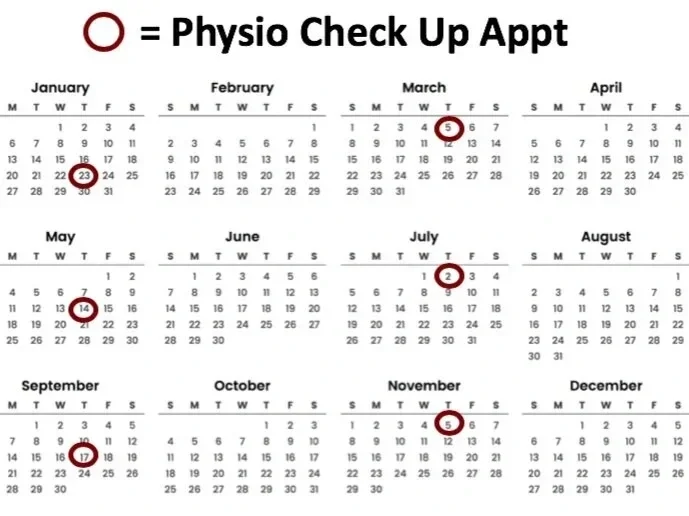PHYSIOTHERAPY
Assessment
Global Approach
A thorough physical assessment will consider how are all parts of your body are interacting and influencing each other. Your assessment will continue throughout the treatment process. Often the root of the problem can be complicated by secondary complications and compensatory movements that the body has developed to offset the actual source of the injury. Most injuries occur as a result of an underlying “weakness” in the movement system. This is why prevention is so important.
System: I will begin by looking at your complexities of movement. Taking into consideration your big picture, I will examine your movement in the context of your entire body. This means analyzing a functional activity or a movement task that is meaningful to you. If movement can not be replicated in the clinic I may ask you to bring me a video and/or a photo that I can analyze.
Sequence: Understanding how you move in the global context will provide me direction for assessing your coordination of movement. At this stage I will gain insight into how you recruit and organize movement. I will examine your movement sequences in isolation to help me identify maladaptive movement patterns or abnormal muscle recruitment. Dysfunction at the sequencing level may be due to poor neuromuscular control or affected segments.
Segment: Depending on how you sequence movement I can determine which component of movement may be hindering your overall function. A hands-on evaluation to determine the source of your movement restrictions (hypomobility) or too much movement without stable control (hypermobility) will complete your physical assessment.
Treatment → In-clinic, Hands-on Intervention
Intramuscular Stimulation (IMS)
Nerves are the electrical input in our systems that tell muscles (and other entities) to work in our bodies. The location where the nerve inserts into the muscle is called the neuromuscular junction. When there is too much electrical input from nerve-to-muscle, the muscle develops abnormal tension also commonly referred to as a “knot” or a trigger point, at the neuromuscular junction. Intramuscular stimulation involves the insertion of a fine, acupuncture-like needle into the knot to restore normal function of the muscle and its associated nerve. IMS gives you pain relief: it subdues the overactive nerve system and reestablished normal muscle tension.
Manual therapy= Any Hands-on Intervention
Joint Mobilizations
When one bone intersects another in the body (for instance, contact between the tibia on femur at the knee joint), there is a gliding motion, that takes place within the joint. Joint mobilizations involve stabilizing one bone while passively gliding the adjacent bone within the joint, manually addressing sources of restriction either in or around the joint. Manually gliding one joint surface on another releases tension around the joint and promotes increased range of motion. The result is a freeing of pain-provoking chemical biproducts, which decreases the pain.
Joint Manipulations
Uses the same concepts of joint mobilizations but with a higher velocity thrust of a joint beyond its current available limit for the purpose of restoring motion and function of a chronically stiff joint. We will only use this technique with a joint that is stiff but not painful. It is common to hear a pop or crack as CO2 that has been compressed within the restricted joint is released from the fluid to gaseous state as more “room” within the joint becomes available.
Soft tissue mobilizations
A broad term used to summarize of manual therapy techniques that uses hands-on and instrument-assisted approaches on skin, muscles, ligaments, tendons and fascia to release restrictions and optimize function.
Myofascial release:
Active
Passive
Instrument assisted
Muscle energy technique
Nerve glides- Nerves infiltrate every part of our body.
Deep transverse frictions
Scar massage
Lymphatic drainage
Objective Strength Testing
Objective strength testing gives clear, measurable data on how your body is performing — so we can target your weaknesses, track your gains, and make smarter decisions about your care. The digit strength testing tools allow us to compare your results between assessment and discharge, against standardized norms, and help you to see your strength gains
Custom Splints
Personalized splints fabricated in clinic to fit your unique anatomy. Bracing protects our body by providing external supports and off-loading injured tissue so that it can heal optimally.
Cupping
Rooted in ancient Eastern medicine principles, fire cupping has been adopted by Western medicine for the purpose of increasing circulation and drawing-in healing factors into a specific area. In addition, the suction created by the cooling of the air inside the cupping creates a vacuum that separates layers of tissue, decreasing any adhesions that may have formed as a result of inflammation.
Requisitions for Imaging: orders for xray, ultrasound and MRI available as needed
Teach → Movement Awareness, Advice, Education
Your body can get into movement patterns that feel normal to you but can be detrimental to movement recovery. I will invite you into your rehabilitation process by arming you with information. What you do outside of the clinic is as important, if not more important, than what we are doing during your treatment sessions. Because I can’t go home with you, I will communicate key bits of knowledge to enable you to be mindful of your movement between treatments
Visual Cues
Tactile Cues
Muscle Stimulation
Train → Home Exercise Program
The purpose of the home-exercise portions is to maintain the movement gains made in the clinic during the “Treat” portion of the intervention so that we can continue to build on that progress. The exercise choice is informed by your response to an intervention technique as determined by the test/retest. Practicing improved movement through repetitive guided activity is essential to making progress in recovery and maintaining the gains made in the clinic between appointments.
The benefits of exercise may not be as obvious or immediate as the in-clinic intervention. For these reasons it can be hard to stay motivated. However, it is super important to invest in this portion of your program. Your recovery timeline depends on it!
Discharge
Your Goals Were Met ✓
Meaningful Change ✓
Full Performance ✓
Maintenance Plan ✓
“We are what we repeatedly do.
Excellence, therefore, is not an act, but a habit”












